Hamarikyu gardens is one of the largest Japanese gardens in Tokyo. It is a good place to relax and to see flowers and trees. It is located by Tokyo Bay and there are big ponds connecting with sea water. The contrast between nature and tall buildings around the gardens is interesting.
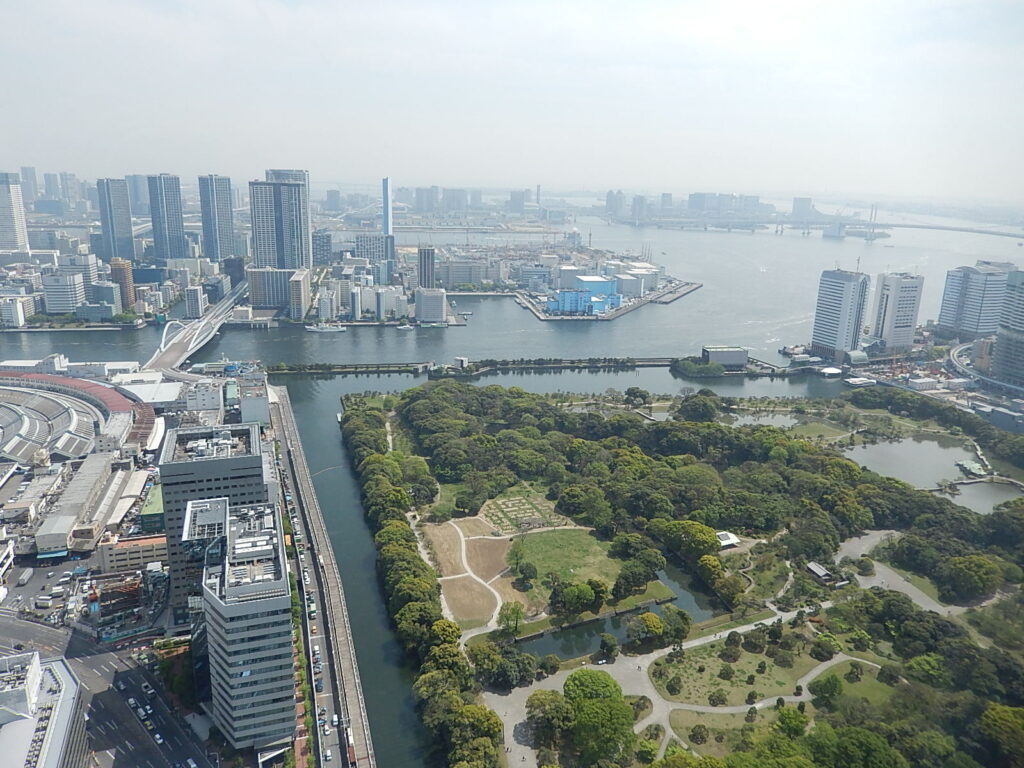
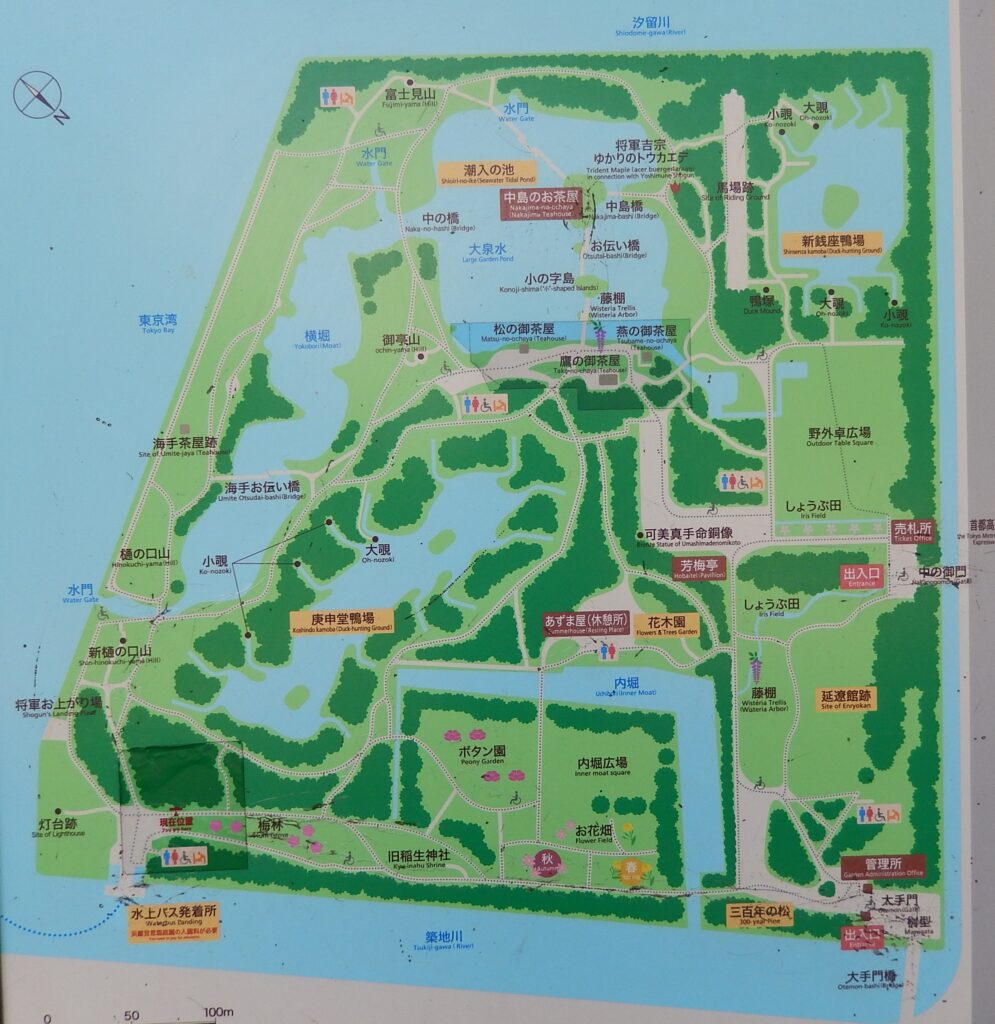
■ Points of interest
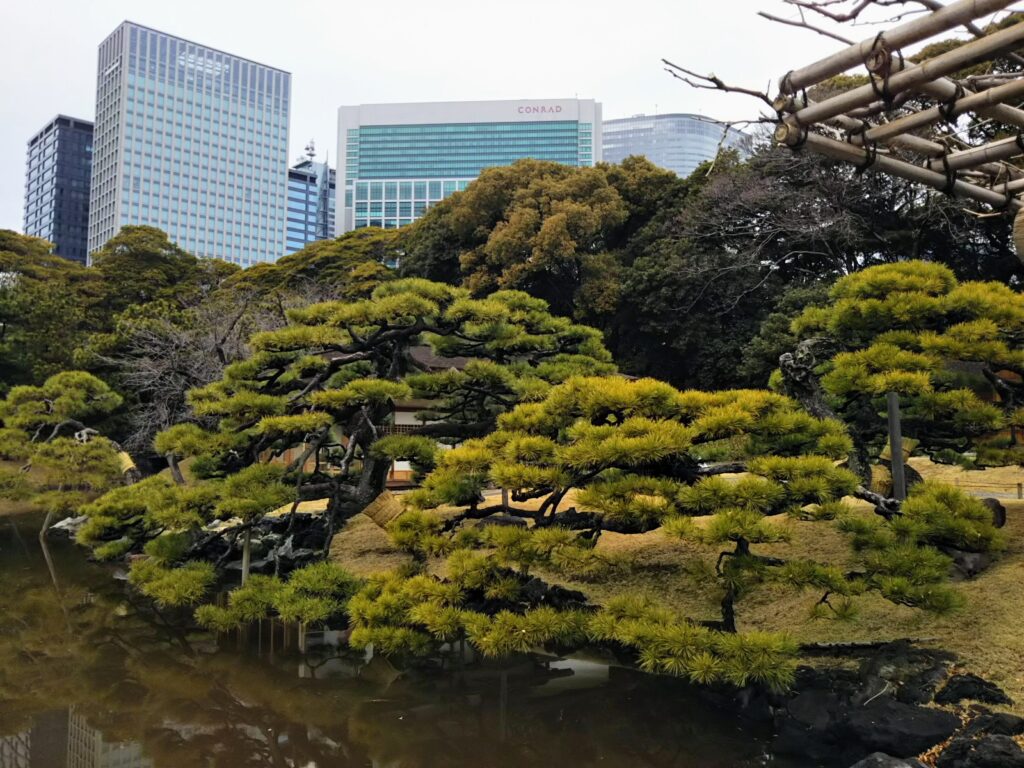
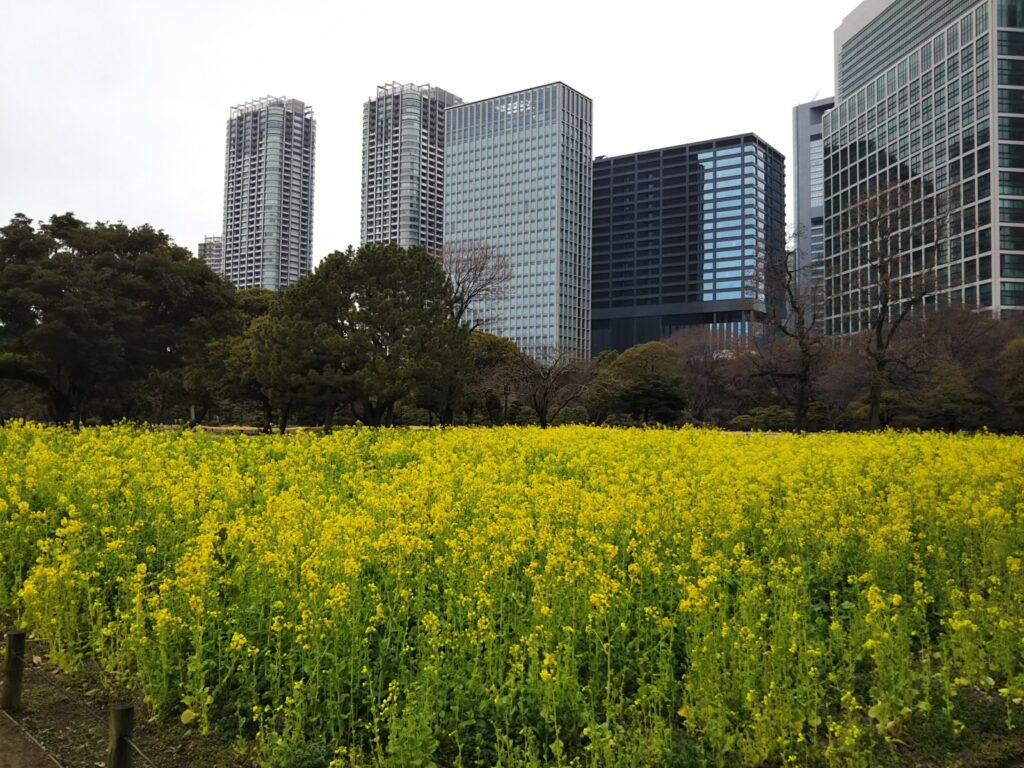
(1) Three hundred years pine
When you enter the Otemon gate, soon you will see a very large pine tree. It is called Three hundred years pine, because it was planted by 6th Shogun, Tokugawa Ienobu, over 300 years ago when the garden was renovated. It looks like a huge bonsai. Bonsai is the Japanese art of growing and shaping miniature trees in containers. Overhang low thick branches are stately.
(2) Flower fields and beautiful trees
Near the three hundred pine tree, there are flower fields that offer beautiful flowers such as yellow colza, vibrant peonies, and cosmos all year round. The combination of colorful flowers and high-rise buildings looks interesting. Also, the colors of the gardens change with the seasons. In spring plum and cherry trees bloom in white and pink. In autumn tree leaves turn yellow and red such as ginkgo trees and maple trees.
(3) Duck ground
The duck ground is a small area where wild ducks gather. There are a pond and bush surrounded by mounds of earth with approximately 3m or 10 feet high, and people planted evergreen trees and bamboo grass to cut it off from the outside so that ducks took a rest in peace. Ducks were lured into a narrow moat by bait such as grain or cereal. People watched ducks from a small hole and performed the hunting with a hawk from the shade of the embankment in the Edo era, and with a dip net in the Meiji era.
(4) Informal Tea Ceremony at a tea house
There is a small island “Nakano shima” in one of the ponds. You can walk to the island through traditional bridges. There is a tea house where you can experience an informal tea ceremony every day. Peaple should take off their shoes before entering the tea house.
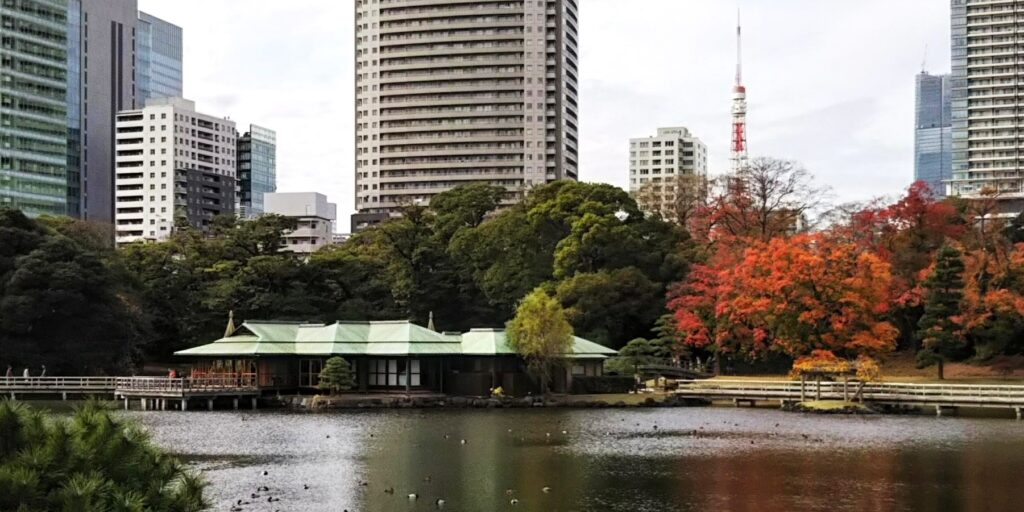
■ History
A long time ago, this area was a grassland near Tokyo Bay. In the 17th century, this area became the Shoguns’ falconry ground. Shogun and his retainers trained hawks to catch ducks. When Tokugawa Ienobu became the 6th shogun in 1708, the shogun’s holiday house (villa) was built here. Since then, the garden has been renovated several times by successive shoguns.
In 1868 the Meiji Restoration took place, when the Shogunate came to an end and imperial rule was restored. The name of this capital city changed from Edo to Tokyo. Emperor moved from Kyoto to Tokyo and lived in the Imperial Palace that used to be the Edo castle.
The new Tokyo city government became the owner of the Hamarikyu garden. A large guest house was built in the ground in order to entertain VIPs from various countries such as America and many European countries. For example, in 1877 the 18th US president Grant stayed at the guest house for two months and met Emperor Meiji in Hamarikyu gardens.
In 1909, the State Guest House, Akasaka Palace was built in Akasaka, north of the Imperial Palace. Then the Hamarikyu’s guest house was closed. In 1948, the Hamarikyu garden was designated as a national scenic beauty and historic site including the surrounding water surface.
Map
Eddy Murayama, a member of iTWS japan LLP
e-mail: eddy.murayama@i3ws.co.jp
